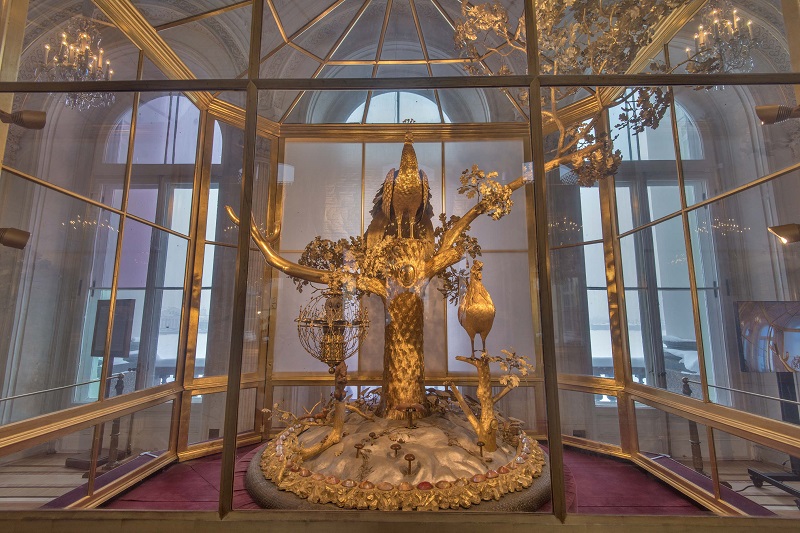Russian Winter Palace, where 1 square meter is a work of art
The Winter Palace is one of the most famous buildings in St. Petersburg, Russia makes many visitors overwhelmed by its detail and splendor
The most luxurious palace in Russia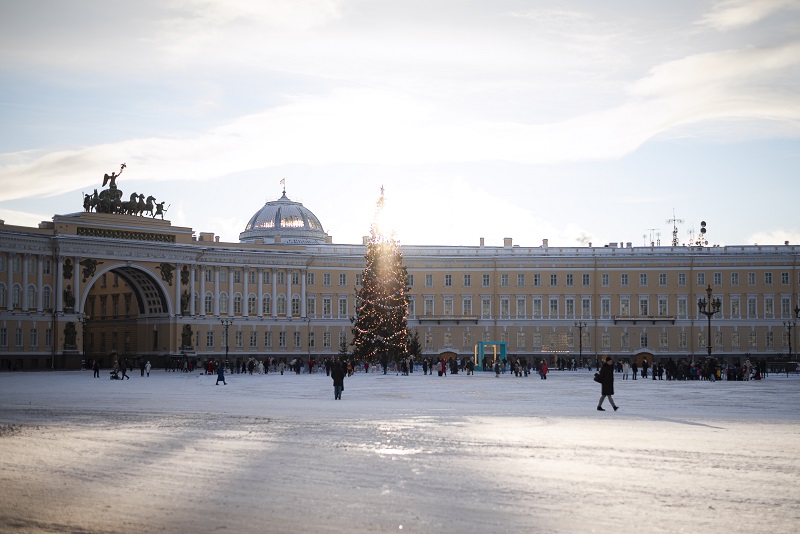 The Winter Palace is the most famous building of St. Petersburg is located on a campus of 90,000 square meters. The palace was designed by Italian architect B. F. Rastrelli at the request of Queen Elizaveta I in the Baroque art style, built in the years 1754 - 1762. For many years, this was also the residence of Russian tsars. .
The Winter Palace is the most famous building of St. Petersburg is located on a campus of 90,000 square meters. The palace was designed by Italian architect B. F. Rastrelli at the request of Queen Elizaveta I in the Baroque art style, built in the years 1754 - 1762. For many years, this was also the residence of Russian tsars. . 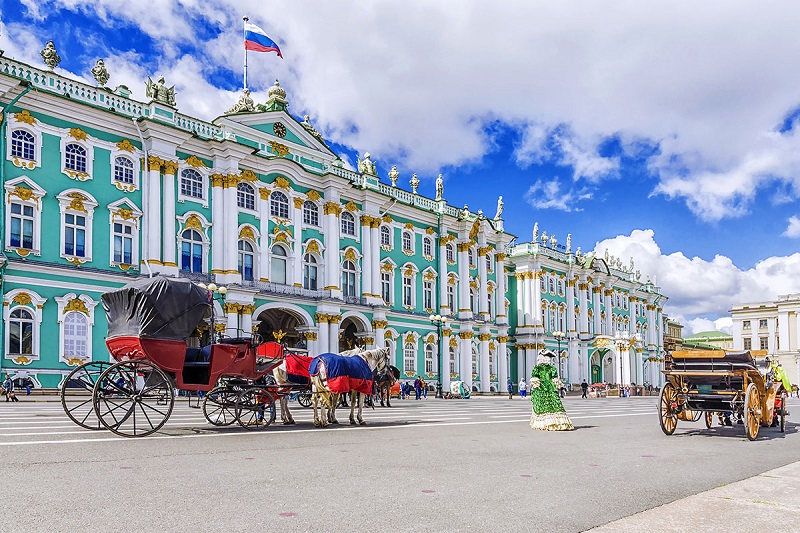 After the fall of the tsarist regime, from July to November 1917, this palace became the meeting hall of the provisional government. In 1918, part of the palace and in 1922 the entire building were given to the Ermitazh Museum, which displays about 3 million works of art from around the world.
After the fall of the tsarist regime, from July to November 1917, this palace became the meeting hall of the provisional government. In 1918, part of the palace and in 1922 the entire building were given to the Ermitazh Museum, which displays about 3 million works of art from around the world.
Impressive features of the Winter Palace
Rich and long history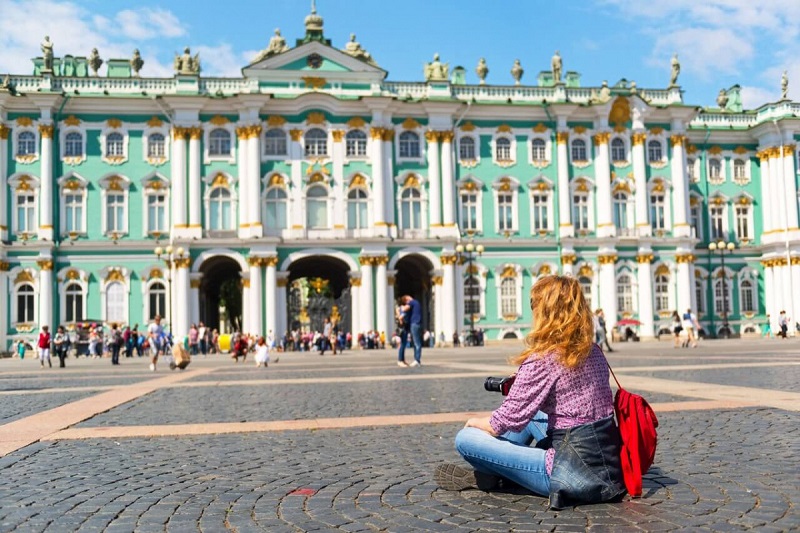 The Winter Palace is located on the famous Neva River in St. Petersburg, considered one of the greatest architectural works and the pride of Russians. The palace has a rich history stretching from the 18th century to the present, witnessing many ups and downs and changes of times. In 1711, the palace was officially started for the first time by architect Georg Mattarnovi. By 1716 - 1719, it was built a second time.
The Winter Palace is located on the famous Neva River in St. Petersburg, considered one of the greatest architectural works and the pride of Russians. The palace has a rich history stretching from the 18th century to the present, witnessing many ups and downs and changes of times. In 1711, the palace was officially started for the first time by architect Georg Mattarnovi. By 1716 - 1719, it was built a second time.
In 1732, Queen Anna Ioannovna continued to request the construction of a larger-scale palace designed and constructed by architect Bartolomeo Francesco Rastrelli, but after this time the Winter Palace still did not completely satisfy the royal family. full. In 1753, Bartolomeo Francesco Rastrelli continued to propose the 4th revision project but it was considered quite expensive and complicated, because Queen Elizabeth required the 4th palace to be completed in 2 years. Through the war from 1756 to 1763, this work continued to be built.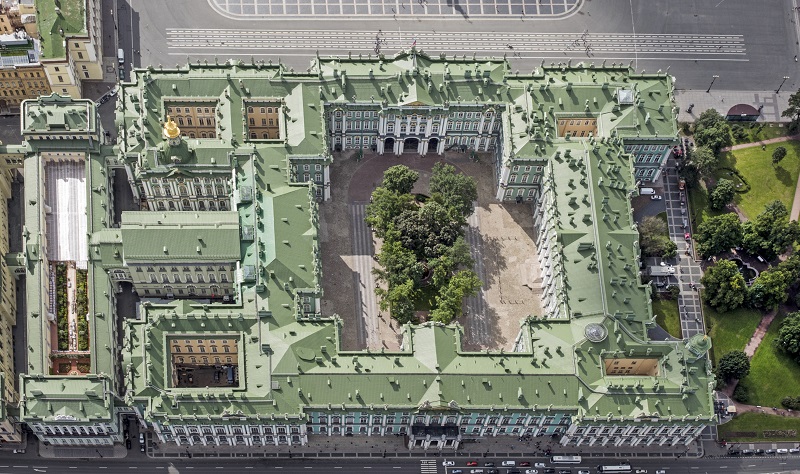 In total, the Winter Palace was constructed by more than 4,000 artists, masons, stone carvers, molders and parquet workers. The workforce was poorly paid and living conditions were poor throughout. The total cost used for the project was about 2,500,000 rubles, but Queen Elizabeth died before the palace was completed in 1761. After that, the palace served Russian Emperor Peter III and Empress Ekaterina.
In total, the Winter Palace was constructed by more than 4,000 artists, masons, stone carvers, molders and parquet workers. The workforce was poorly paid and living conditions were poor throughout. The total cost used for the project was about 2,500,000 rubles, but Queen Elizabeth died before the palace was completed in 1761. After that, the palace served Russian Emperor Peter III and Empress Ekaterina.
Impressive numbers at the Winter Palace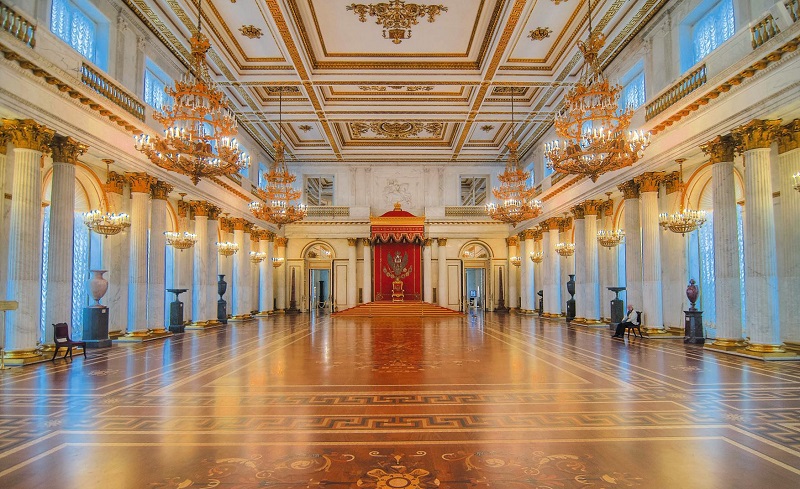 The palace is located on an area of 90,000 square meters with the dominant jade color tone. The main materials used for construction are estimated to be up to 5 million bricks and all kinds of precious stones such as marble and stones imported from Italy and Finland. The columns are decorated with 20 different patterns and designs collected by the architect over 3 decades.
The palace is located on an area of 90,000 square meters with the dominant jade color tone. The main materials used for construction are estimated to be up to 5 million bricks and all kinds of precious stones such as marble and stones imported from Italy and Finland. The columns are decorated with 20 different patterns and designs collected by the architect over 3 decades. 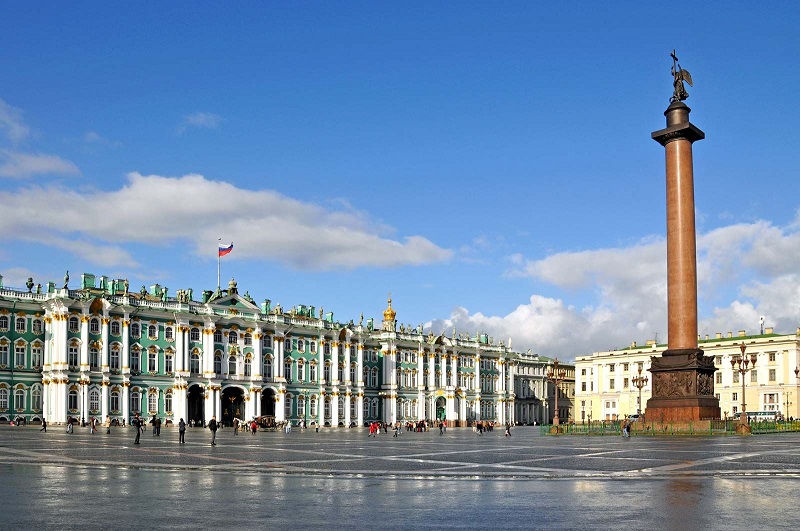 The Winter Palace has a height of 30m and a width of 150m, inside there are more than 1000 rooms with 2000 windows, 11 staircases, 1786 large doors. Besides, there are countless unique works of art. If we only count the number of works decorated on the stairs, there are 200 works. According to rough estimates, if you spend 1 minute looking at one artifact at the Winter Palace, it would take about 8 years to see it all. The route to visit the palace is estimated to be 20km with 350 large and small halls
The Winter Palace has a height of 30m and a width of 150m, inside there are more than 1000 rooms with 2000 windows, 11 staircases, 1786 large doors. Besides, there are countless unique works of art. If we only count the number of works decorated on the stairs, there are 200 works. According to rough estimates, if you spend 1 minute looking at one artifact at the Winter Palace, it would take about 8 years to see it all. The route to visit the palace is estimated to be 20km with 350 large and small halls
Luxurious look in the palace
A characteristic feature of the Baroque architectural style at the Winter Palace is the wide domes with oval doorways. The oval doorways are repeated continuously, bringing a strong impression to visitors. As soon as we stepped inside, we were overwhelmed with the high and splendid ceiling, filled with works of art. The palace's smart lighting system also keeps the interior bright, creating a romantic scene like a fairy tale. Every square meter in the palace is an impressive work of art, with marble floors and an intact appearance despite hundreds of years of history. The railings, ceilings, walls, windows and main doors are all meticulously cared for and designed with sparkling gilding and carvings, and no two spaces are identical.
Every square meter in the palace is an impressive work of art, with marble floors and an intact appearance despite hundreds of years of history. The railings, ceilings, walls, windows and main doors are all meticulously cared for and designed with sparkling gilding and carvings, and no two spaces are identical.
The Hermitage Museum is one of the prominent places in the Winter Palace, one of the 5 largest museums in the world with many artistic masterpieces. The artifacts here are collected from all over the world, including priceless works of art such as paintings by Renaissance masters. Some famous artists whose artifacts are displayed here are Michelangelo, Leonardo, Rembrandt, van Gogh, Picasso.
Destinations not to be missed at the Winter Palace
Gala stairs
The Gala Staircase is the first special impression for visitors when they first arrive at the Winter Palace, bearing a special sumptuousness and grandeur. Don't forget to stop and take a photo here before going to visit other artifacts.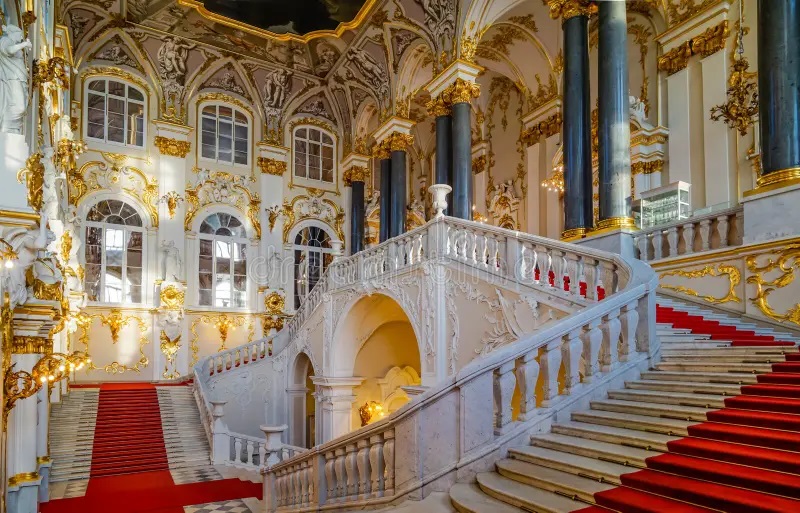
Loggias Raphael art corridor
This beautiful corridor, created by architect Giacomo Quarenghi, is essentially a replica of the famous Vatican Gallery. On each arch are paintings of biblical stories and bas-reliefs.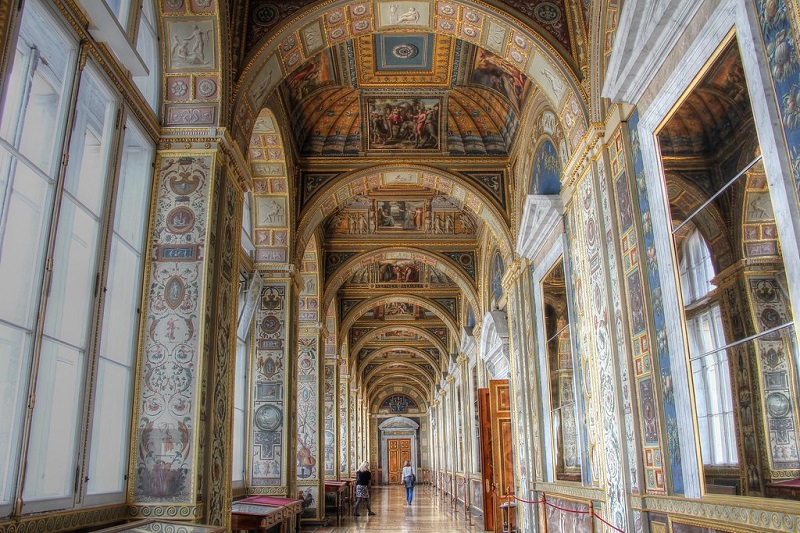
Pavilion Hall
This is one of the most beautiful rooms of the Winter Palace. This sumptuous hall is illuminated by 28 large and small crystal chandeliers and embellished with Renaissance, Gothic and Oriental motifs.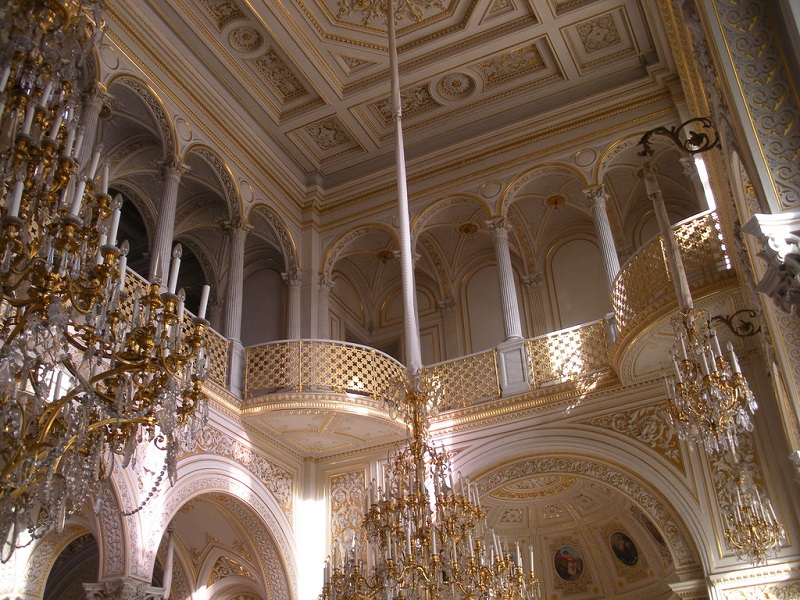
Peacock Clock
In the Pavilion lobby, Russian tourists can find a beautiful Peacock clock masterpiece that is extremely elaborately decorated. This is not only a watch but also a unique automatic mechanical device with a life of 240 years. The clock features three life-sized mechanical animals – an owl, a rooster and a peacock. Every Wednesday at 7pm (or it can be changed), the clock will be wound up and turned into a moving work of art. The watch was made by English jeweler James Cox in 1770 and purchased by Catherine the Great.